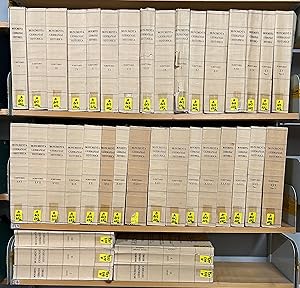georgius (Mehr als 4.000 Ergebnisse)
Produktart
- Alle Produktarten
- Bücher (4.007)
- Magazine & Zeitschriften
- Comics
- Noten (48)
- Kunst, Grafik & Poster (8)
- Fotografien
- Karten (2)
-
Manuskripte &
Papierantiquitäten (1)
Zustand
Einband
Weitere Eigenschaften
- Erstausgabe (180)
- Signiert (14)
- Schutzumschlag (78)
- Angebotsfoto (2.898)
- Kein Print-on-Demand (1.603)
Gratisversand
Land des Verkäufers
Verkäuferbewertung
-
De re Metallica.
Verlag: Bâle, J. Froben & N. Episcopius, 1556., 1556
Anbieter: Librairie Camille Sourget, Paris, Frankreich
Verbandsmitglied: ILAB
Couverture rigide. Zustand: Très bon. 800x600 Normal 0 21 false false false FR X-NONE X-NONE MicrosoftInternetExplorer4 First edition of Agricola's most celebrated work, first treatise on mining and metallurgy and "one of the first technological books of modern times" Printing and the Mind of Man, no. 79. Agricola (George Bauer) (1494-1555) studied in Leipzig, Bologna and Padua before becoming a physician and mineralogist in the mining centre of Joachimstral in Bohemia and later in Chemnitz, the main mining centre of Saxony. He pursued his scientific research relentlessly, supporting it with very concrete observations that help make his work particularly credible and attractive. Agricola is considered, through this work "De Re Metallica", as one of the founders of systematic mineralogy, the subject of which had previously only been dealt with in the "Probierbüchlein" in 1510 and Biringuccio's "De la Pirotechnia" in 1540. The "De Re Metallica" divided into 12 books is a true encyclopedia of the mining industry. The first six books deal with the "art of extracting metals" and thus with mining itself. Book VII deals with furnaces and operations for testing ores and metals. Book VIII studies the preparation of ores (crushing, grinding, washing, etc.). Book IX describes the furnaces, machines and instruments required, and books X and XI the refining of metals. Book XII deals with salts, nitrates, alums, sulphurous substances and ends with the manufacture of glass. The most important passages of the treatise deal with mechanics, the use of water power, pumping systems, ventilation, transportation of ores and show a very elaborate technology. The illustration contains 273 woodcuts by Hans Rudolf Manuel Deutsch. Some are full-page (235 x 140 mm), others half-page, and are strikingly realistic, depicting the daily life of an active mining centre in the mid-sixteenth century and illustrating the state of mechanical, physical and geological knowledge of the time. More than a study of minerals, the author relates in this work the technical expertise applied to mining that he was able to observe during his numerous trips throughout Europe. Mechanics, the specific use of water, pumping and extraction systems, ventilation, tools and the transport of ores are some of the topics studied in this book. The iconography offers a striking testimony to the daily environment of a sixteenth century mining centre, not only in terms of techniques and skills, but also in terms of clothing and hair styles of the time. His living environment enabled Agricola to combine his scientific research with concrete observations that contributed to the quality of the content of his publications, including De re Metallica. A fine copy in a well-preserved contemporary binding, with some usual wear to the pages. Very often read and leafed through for the interest of their text and illustrations, copies that have come down to us are generally in much later bindings or even recased. An exceptional copy, the only one recorded on the market preserved in its beautiful contemporary blind-stamped pigskin binding from Basel with its contemporary clasps preserved. It is particularly wide-margined: 319 mm. Ref. : Adams A-349 ; Soltész A-80 ; Printing and the Mind of Man n°79 ; Van Lennep, Alchimie, Bruxelles, 1984, p 21 ; not in Machiels.
-
De re Metallica. De animantibus subterraneis liber.
Erscheinungsdatum: 1556
Anbieter: Librairie Camille Sourget, Paris, Frankreich
Verbandsmitglied: ILAB
Couverture rigide. Zustand: Très bon. Bâle, J. Froben & N. Episcopius, 1556.In-folio de (5) ff, 1 f.bl., 502 pp. et (37) ff., ainsi complet du rare feuillet blanc. Relié en demi-vélin, tranches rouges. Reliure du XIXe siècle. 332 x 226 mm. --- Édition originale du plus célèbre ouvrage d'Agricola, premier traité sur les mines et la métallurgie et "one of the first technological books of modern times". P.M.M., n°79. Georges Bauer Agricola (1494-1555) effectua ses études à Leipzig, Bologne et Padoue avant de devenir médecin et minéralogiste dans le centre minier de Joachimstral en Bohème puis à Chemnitz, principal centre minier de la Saxe. Il poursuivit sans relâche ses recherches scientifiques, les étayant d'observations très concrètes qui contribuent à rendre son ouvrage particulièrement crédible et attrayant. Agricola est considéré, par cet ouvrage « De Re Metallica », comme l'un des fondateurs de la minéralogie systématique, dont le sujet n'avait été traité auparavant que dans le « Probierbüchlein » en 1510 et le « De la Pirotechnia » de Biringuccio en 1540. Le « De Re Metallica » divisé en 12 livres est une véritable encyclopédie de l'industrie minière. Les six premiers livres traitent de « l'art d'extraire les métaux » et donc de l'exploitation minière proprement dite. Le livre VII traite des fours et des opérations propres à l'essai des minerais et des métaux. L'illustration se compose de 273 gravures sur bois dues à Hans Rudolf Manuel Deutsch. Certaines à pleine page (235 x 140 mm), d'autres à mi-page, elles sont saisissantes de réalisme et campent d'une façon précise l'univers quotidien d'un centre minier actif au milieu du XVIe siècle tout en illustrant l'état des connaissances mécaniques, physiques et géologiques du temps. Les passages les plus importants du traité abordent la mécanique, l'utilisation de l'énergie de l'eau, les systèmes de pompage, la ventilation, le transport des minerais et font preuve d'une technologie tr? /// Basel, J. Froben & N. Episcopius, 1556.Folio [332 x 226 mm] of (5) ll., 1 bl.l., 502 pp. and (37) ll., complete with its rare blank leaf. Bound in quarter vellum, red edges. Binding from the 19th century. --- First edition of Agricola's most famous work, the first treatise about mines and metallurgy and "one of the first technological books of modern times". P.M.M., n°79.Georges Bauer Agricola (1494-1555) studied in Leipzig, Bologna and Padua before becoming doctor and mineralogist in the mining center of Joachimstral in Bohemia then in Chemnitz, main mining center of Saxe. He continuously followed his scientific research, supporting them with very concrete observations that made his work particularly believable and attractive. Agricola is considered, with this work "De Re Metallica", as one of the founders of systematic mineralogy, which subject had not been treated before in the "Probierbüchlein" in 1510 and the "De la Pirotechnia" by Biringuccio in 1540. The "De Re Metallica" divided into 12 books is a true encyclopedia of the mining industry. The first six books deal with "the art of extracting metals", therefore of the actual mining exploitation. The 7th book deals with the ovens and the operations regarding the tries of ores and metals. The illustration is composed of 273 woodcuts by Hans Rudolf Manuel Deutsch. Some of the woodcuts are in full-page (235 x 140 mm), other are in half-page. They are impressive by their realism and present with precision the daily universe of an active mining center in the middle of the 16th century while illustrating the state of mechanical, physical and geological knowledge of the time. The most important passages of the treatise deal with mechanics, the use of water energy, the pump systems, the ventilation system, the ore transport and prove a very elaborate technology. A very pure and wide-margined copy (height: 332 mm) of this first edition of one of the first works of European technology. It comes from the collect.
-
De ortu & causis subterraneorum Lib. V. De natura eorum quae effluent ex terra Lib. IIII. De natura fossilium Lib. X. De veteribus & novis metallis Lib. II. Bermannus, sive de re metallica dialogus. Interpretatio Germanica vocum rei metallicae, addito Indice foecundissimo
Verlag: Hieronymus Froben, Basel, 1546
Erstausgabe
Hardcover. First edition. THE FIRST HANDBOOK OF MODERN SYSTEMATIC MINERALOGY. An exceptionally fine copy, completely untouched in its original binding, of 'the first handbook of modern systematic mineralogy' (Grolier/Horblit 2a). "Georgius Agricola (latinized from the German 'Georg Bauer') became interested in the theoretical and practical aspects of mining, metallurgy and geology after being appointed town doctor of Joachimsthal, a silver-mining community on the east side of the Erzgebirge mountains in what is now Czechoslovakia. He published his first work on mining, Bermannns sive de re metallica dialogus, in 1530, and followed it sixteen years later with this collection of five treatises on geology and metallurgy, including the first work on physical geology ("De ortu & causis subterraneorum"); the first systematic mineralogy ("De natura fossilium"); a work on subterranean waters and gases ("De natura eorum quae effluunt ex terra"); a treatise on references to minerals and mining in classical history ("Dc veteribus et novis metallis"); and a reprint of Bermannnus. "De natura fossilium," after De re metallica, must be considered Agricola's most important work; in it he rejected the traditional arbitrary alphabetical listing of "fossils" (i.e., stony substances dug from the earth), and attempted to classify them according to their physical properties" (Norman). In De Natura Fossilium, Agricola rejected many myths associated with gems, and the system of classification that is inferred from his writings exhibits a degree of generalization not found in earlier handbooks. His work represented a major advance over previous writings on rocks and minerals in that it classified them, not alphabetically or by their supposed mystical powers, but by simple physical properties. Minerals are grouped into (1) earths, like clay, ochre, etc., (2) stones like gems, semi-precious and unusual as distinguished from rocks, (3) congealed juices like salt, vitriol, alum, etc., (4) metals and (5) compounds, being homogenous mixtures of simple substances and forming minerals like pyrite, galena, etc. Agricola applied physical properties such as solubility, fusibility, odor, taste, color, etc. to distinguish between mineral varieties. Although Agricola's work included no pictures, his descriptions of fossils are often instantly recognizable: "Lapis judaicus . usually occurs in the form of symmetrical acorns. Prominent lines run from the blunt to the pointed end and these are so regular they appear to have been made in a lathe and resemble the striae on a shell. The people who call this mineral pyren liken these lines to the bones of a fish that extend from the back down to the belly . When split open it is light inside and glistens like marble and in some cases the outside also has a high luster." Again: "Certain rocks, when split open, are found to contain shells; for example, the conchites beds of Megara and the rocks of France. . . Ostracites is a stone that takes its name from ostreum [oyster] which it resembles. There are two species, the larger found in the moat on the north side of Hildesheim . The smaller species is found not far from Hanover on a cliff near the village of Linda in an unctuous light green earth . It forms in strata that are conspicuous. When tapped with the finger it has the sound of a jug." Agricola noted the resemblance of many of his "fossils" to living organisms, but rarely stated that any of his fossils actually did represent once-living organisms. The question of whether fossils did represent once-living organisms was still debated in Agricola's time, and was not finally resolved until the early 18th century. Book I of De natura fossilium describes the characteristics of minerals such as color, brillance, taste, shape, hardness, etc. Book II describes the earths and Book III reviews the minerals made of congealed juices, and includes salt, soda, potash, saltpetre, alum, vitriol, orpiment, etc. Book IV treats camphor, bitumen, coal, amber, etc. Book V covers lodestone, bloodstone, gypsum, talc, asbestos, mica, geodes and various fossils, flourite and quartz. Book VI treats gems and other precious stones. Book VII in on rocks like marble, serpentine, onyx, alabaster, limestone, etc. Book VIII covers metals, while Book IX describes various furnace observations such as making brass, gilding, tinning and furnace products like slag, copper flowers, etc. Book X covers compounds that embrace the description of a number of recognizable silver, copper, lead, quicksilver, iron, tin, antimony and zinc minerals. "Agricola's first work on mining and mineralogy is his Bermannus, 1530. It is in the form of a conversation in which Bermannus, a miner (really named after his friend Lorenz Bermann, d. 1533) and two Italian physicians, Nicolaus Ancon and Johannes Naevius, discuss mines and minerals. At the end is a small glossary of German mining terms with Latin equivalents by Petrus Plateanus (a schoolmaster at Zwickau), which was much enlarged in later works of Agricola, when it was called Interpretatio Germanica vocum rei metallicae and supplemented by a Nomenclatura Latina Graecaque Germanice reddita, attached to the De Natura Fossilium (see below), and a Nomenclatura secunda. The Bermannus gathered together much unsystematic and empirical knowledge of the miners. It was reprinted in 1546 with an enlarged list of synonyms and four new works [the offered collection] . [The other three works in the collection are:] "De ortu et causis subterraneorum libri V. This is mostly on geology. It gives an approach to the modern theory of ore deposits and rejects the old idea - still believed by Boyle - that rock crystal is formed from water by intense frost (satis intelligimus ex sola aqua non gigni lapidem ullum), mentions Hecla as an active volcano and explains the origin of minerals and certain rocks as due to a petrifying juice (succus lapidescens). "De natura eorum qui effluent ex terra, libri IIII. This deals with water, mine g.
-
De re metallica libri XII. - De animantibus subterraneis liber.
Verlag: Hieronymus Froben and Nicolaus Bischoff, 1561
Anbieter: Sokol Books Ltd. ABA ILAB, London, Vereinigtes Königreich
Buch
Hardcover. Zustand: Good. "Folio, pp. [xii] 502 [lxxiv]. Roman, Greek and Gothic letter. Woodcut printer's device on title and verso of last, two woodcut plates, one folding, a total of 273 large woodcut illustrations and diagrams in good clean impression, some full-page, white on black initials. Light age yellowing, a few marginal spots and splashes, clean tear without any loss in one leaf, early ms press mark to t-p and later, but not modern, to pastedown. A good, clean wide-margined copy. Formerly in contemporary 1/4 pigskin over paste-boards, the pigskin removed exposing stitching and binder's waste, cover from a ms. on vellum in red and brown ink, decorated initials, early 1400's. In folding box. SECOND EDITION of the "first systematic treatise on mining and metallurgy and one of the first technological books of modern times" (PMM), the earliest and pre-eminent early work on metallurgy and mining. It is remarkably richly illustrated with technical woodcuts of the highest quality, largely by Hans Rudolf Manuel Deutsch (after Blasius Weffring). All of them are based on Agricola's own drawings of processes and phenomena he personally observed. The work "embraces everything connected with the mining industry and metallurgical processes, including administration, prospecting, the duties of officials and companies and the manufacture of glass, sulphur and alum. The magnificent series of two hundred and seventy three large woodcut illustrations add to its value. Some of the most important sections are those on mechanical engineering and the use of water power, hauling pumps, ventilation, blowing of furnaces, transport of ores etc., showing a very elaborate technique" (PMM). It is "one of the great monuments of technology by reason of the comprehensiveness of its text and the detail and intelligibility of its numerous illustrations" (Singer, vol II, p. 27), and became "the early standard treatise" on the subject (Horblit, 2b). It is also one of the important contributions to physical geology, in particular the influence of wind and water erosion on landscape and its clear account of the order of strata exposed by mines. The work concludes with a 20 page glossary of technical terms and names in Latin and German which contains a new scientific classification of minerals based on their physical properties; the mode of occurrence and mutual relation of some 80 minerals and ores are discussed, no less than 21 of them for the first time. Written over two decades, the work illustrates Bauer's familiarity both with the technical and financial aspects of mining as well as his concern for the health of the miners. Bauer had studied medicine in Leipzig before moving to the important mining centre of Joachimstal (in latter-day Czechoslovakia) as the town physician. There, Bauer observed both by day and by night the unceasing activities of the mines, "and his interests were aroused by the metallurgical, mineralogical and chemical problems of the trade. He published several books relating to these, the above is outstanding in the field of all science and technology; it was published posthumously. Many large woodcuts present vivid pictures of men at work, machines pumping, ventilating, smelting, assaying, transportation, and hoisting equipment and methods of his time" (Dibner, Heralds of Science, 88). The work was translated into English in 1912 by Herbert Hoover, afterwards president of the United States. BM STC Ger. p.8; Adams A-350; PMM 79 (1st edn); Brunet I, 113; Horblit, One Hundred Books Famous in Science, 2 (1st); Duveen pp. 4-5; Ferguson I, p.9; Kress I, 71 (1st); Ford, Images of Science, pp. 124-5; Norman 20. Latin".
-
De Re Metallica libri XII. Quibus officia, instrumenta, machinae, ac omnia denique ad Metallicam spectantia.eiusdem de animantibus subterraneis liber.
Verlag: MDLXI. (In fine:) Basileae in Officina Frobeniana, per Hier. Frobenium et Nic. Episcopium, Anno Domini M.D.LXI (1561),, Basilea, 1561
Anbieter: Libreria Antiquaria Pregliasco, Torino, Italien
moderna. Zustand: molto buono. in-folio, ff. (6, sesto bianco), pp. 502, ff. (37, Index), splendidamente illustrati in silografia da 2 tavole fuori testo, 273 grandi fig. n.t, vari capilettera istoriati, emblema di Froben sul titolo e in fine. Bella legatura moderna in pieno vitello biondo, dorso a nervi con titolo e fregio in oro negli scomparti, tagli bruni. Seconda edizione latina (prima 1556 del medesimo Froben) della monografia fondamentale sulla scienza dei metalli. Le magnifiche incisioni, a piena o mezza pagina, sono assegnate agli artisti Hans Rudolf M.Deutsch e Blasius Weffring; illustrano ogni aspetto della metallurgia e mineralogia, particolari di macchine e atrezzi, scene di lavorazione, tecnologie specifiche, etc. Ogni aspetto del lavoro sotterraneo e di officina, e di applicazione dei macchinari inventati, è accuratamente descritto nei dodici capitoli che compongono l'opera. (''De re metallica remained the standard text-book on mining and metallurgy for over two-hundred years'' - Norman catalogue). Esemplare assai bello, a larghi margini. Hoover Coll. 17 e 19: «The first systematic treatise on mining and metallurgy» . Horblit, 100 books in science 2b. PMM 79. Book.
-
Venice, Jacobus à Burgifrancho, 1537. 8vo. Bound in two nice later (18th century) half vellum bindings with gilt leather title-labels to spine. Lovely 18th century patterned paper over boards. a bit of overall wear, but generally very nice. Internally very nice and clean, with only very light occasional dampstaining. Small wormholes to blank margins, some neatly restored. Overall a very nice, clean, and fresh set indeed. Fully complete (possibly with the exception of blanks in the Odyssey). Iliad: (22), 277, (1, colophon) ff. + two blank leaves. Title within woodcut ornamental border, woodcut initials, large woodcut printer's device to verso of colophon-leaf. Odyssey: 251, (8, -index), (1, -colophon) ff. Title within woodcut ornamental border, woodcut initials, large woodcut printer's device to verso of colophon-leaf. The 8-leaf index has been misbound and is placed between ff. 184 and 185. Scarce first printing of the first Divo-editions of The Iliad and The Odyssey, the first printed official "Versio Latina" of Homer, being the first complete Latin text of the Iliad and Odyssey available in print and one of the most influential versions of these two masterpieces ever to appear. "The Versio Latina, or Latin translation of the works of Homer, has existed since the 14th century, but was first printed, under the name of Andreas Divus, in 1537. It is a crib, to give it no finer name, but a crib which had immense influence, being the first introduction to Homer for generations of mediaeval and early modern scholars." (Introduction by Hefyd to the Libri Vox-version of Book 6 of the Odyssey). While several other versions of the Iliad and the Odyssey had appeared earlier, Divo's Latin translation of both works together, with life of Homer by Herodotus in Latin version by Konrad Heresbach, and with the Batrachomyomachia and Homeric hymns in Latin versions by Aldus Manutius and Georgius Dartona, came to greatly dominate Homeric reading in the 16th century and became one of the very most influential versions of the Homeric corpus ever to appear. This came to be the standard Latin version of Homer for centuries to come. It was this version of the texts that Chapman for his translation into English in 1598, and it was used directly by Ezra Pound in his long poem "The Cantos" more than three centuries later. "The first half of the sixteenth century witnessed an explosion of Homeric texts in print, including the influential Hervagius editions by Joachim Camerarius and Jacobus Micyllus (Basel, 1535 and 1541) and four Strasbourg editions (by Johannes Lonitzer and Wolfgang Capito) between 1525 and 1550 alone. But it was the production of Latin, as well as bilingual Greek-Latin, editions during this period that helped to broaden familiarity with Homer among learned humanists and lay readers alike. [.) Sebastian Castellio' s 1561 Greek-Latin edition of Homer was clearly intended for educational purposes, as were Crispinus' s editions (Geneva, 1560 ? 1567), which advertise on their title pages that they contain a " literal Latin version set against [the Greek]" (Latina versione ad verbum e regione apposita). Yet it was another ad verbum Latin translation of the Iliad and Odyssey, by Andreas Divus, that came to dominate during the sixteenth century. First printed in two Venice editions of 1537, one by Melchior Sessa and the other by Jacobo Burgofranco, both with a preface by Divus' s fellow Capodistrian humanist Pier Paolo Vergerio, this Latin crib was later reprinted by the jurist Obertus Giphanius (Hubert van Giffen, 1534 ? 1604) and then used (via Crispinus' s 1570 Geneva edition) as the foundation for Johannes Spondanus' s (Sponde, Jean de, 1557 ? 1595) Latin text in his 1583 Homeri Quae Extant Omnia, a bilingual edition with extensive commentary whose Greek text was the 1572 Strasbourg edition of Giphanius (Sowerby 1996). Although Divus' s translation was the first complete Latin text of the Iliad and Odyssey available in print, its originality has been questioned, given the many close parallels it shares with the much earlier translation by Leontius Pilatus (d. 1366), a translation produced at Boccaccio' s request and subsequently sent to Petrarch." (Pache, edt.: The Cambridge Guide to Homer, 2020, p. 495). Each volume is scarce in itself, but it is extremely rare to find both volumes together and fully complete. Adams H770 Hoffmann II: 333 Graesse III:332.
-
DE RE METALLICA. LIBRI XII. QUIBUS OFFICIA, INSTRUMENTA, MACHINAE, AC OMNIA DENIQUE AD METALLICAM SPECTANTIA.
Verlag: Ludovici Regis, Basil, 1621
Anbieter: Charles Agvent, est. 1987, ABAA, ILAB, Fleetwood, PA, USA
Signiert
Hardcover. Third Latin Edition. Folio (8" x 12-1/2") bound in library buckram; irregularly paginated: [10], 502, [58] pages. Illustrated with 270 woodcuts, many full and half page, some signed with the monogram "RMD," and generally attributed to Hans Rudolf Manuel Deutsch (fl.1525-1572) or, less commonly, Blasius Weffring. Previously published in 1556 and 1561, this edition seems scarcer than either of the previous. PRINTING & THE MIND OF MAN 79: "The first systematic treatise on mining and metallurgy and one of the first technological books of modern times." Herbert Hoover, who first translated this book into English, described this title in his autobiography as "the first important attempt to assemble systematically in print the world-knowledge on mining, metallurgy, and industrial chemistry. It was the great textbook of those industries for two centuries and had dominated thought and practice all that time. In many mining regions and camps, including the Spanish South America, it was chained to the church altar and translated by the priest to the miners between religious services." The book combines a profound technical and financial knowledge of mining with an underlying interest in the health and daily routine of mine workers. The woodcut impressions are strong and dark. Complete but for the two fold-out diagrams lacking. As customary with this title, there is browning throughout, occasionally heavy. Small piece of title page repaired with no loss of text or illustration; ink names of David Stuart dated 1771 and Joseph Robertson dated 1830 on title page. Library bookplate on front pastedown and small ink number on the title page illustration; no other library markings except for numbers on the spine. An important and richly illustrated title. Very Good in a serviceable binding.
-
De Re Metallica libri XII. Quibus Officia, Instrumenta, Machinae, Ac Omnia Denique Ad Metallicam Spectantia, Non Modo?
Verlag: Ludovici Regis., Basileae Helvet, 1621
Anbieter: Alexandre Antique Prints, Maps & Books, Toronto, ON, Kanada
Edition : Third Latin edition. Text in Latin., contemporary blind tooled calf board, rebacked expertly saving the original spine, spine with four raised bands, title in gilt on dark brown calf label on spine, spine with decorative gilt motifs, upper and lower board with rules and blind decorative tooling., De Re Metallica (Latin for On the Nature of Metals [Minerals]) is a book cataloguing the state ofthe art of mining, refining, and smelting metals, first published a year posthumously in 1556 due to a delay in preparing woodcuts for the text. The author was Georg Bauer, whose pen name was the Latinized Georgius Agricola. The book remained the authoritative text on mining for 180 years after its publication. It was also an important chemistry text for the period and is significant in the history of chemistry. This work is a comprehensive and systematic study, classification and methodical guide on all available factual and practical aspects, that are of concern for mining, the mining sciences and metallurgy, investigated and researched in itsnatural environment by means of direct observation. Unrivalled in its complexity and accuracy, it served as the standard reference work for two centuries.Georgius Agricola (1494 ? 1555) was a German Humanist scholar, mineralogist andmetallurgist. Born in the small town of Glauchau, in the Electorate of Saxony of the Holy RomanEmpire, he was broadly educated, but took a particular interest in the mining and refining ofmetals. He is well known for his pioneering work De Re Metallica libri XII, that was published in1556, one year after his death. As a scholar of the Renaissance he was committed to auniversal approach towards learning and research and published over 40 complete scholarly works during his professional life on a wide range of subjects and disciplines, such aspedagogy, medicine, metrology, mercantilism, pharmacy, philosophy, geology, history andmany more. His innovative and comprehensive scholarly work, based on new and precisemethods of production and control is remarkable and has earned him international admiration to this day., Size : Small Folio (330mm x 295m, Illustrated with 292 plates with numerous drop caps, decorative head and tail pieces., P. Title, blank, dedications (2 leaves), readers notice (2 leaves), blank leaf, 1- 538, index (29 leaves). A fine and handsome example with decoratively blind tooled contemporary boards. Text andplates are clean and crisp. A superb handsome copy.
-
[Flowers and fruits on a marble plinth].[Paris or Holland], [ca. 1815-1825]. Four watercolour drawings on paper, three signed "G.J.J Van Os", edged with a thin black border.
Anbieter: ASHER Rare Books, T Goy Houten, Niederlande
[4] ll.Georgius Jacobus Johannes van Os (1782-1861), not to be confused with his nephew George Jac. Joh. Van Os (1805-1841), also a painter, was as a member of a Dutch family of artists. He studied with his father, Jan van Os, a painter of flowers and maritime views. In 1812 Georgius entered the Salon de Paris for the first time. In the following period he not only worked in Paris, but also in The Hague and Amsterdam. In Sèvres, a southwestern suburb of Paris, he worked for the famous porcelain factory. After 1826 he settled definitively in Paris where he died in 1861. He is mainly known for his exquisite "natures mortes", specializing in still lifes of flowers, fruit and game. From early on he demonstrated such exceptional talent that he was asked to paint several flowers for the plates of Jan Kops s famous Flora Batava (1800-1822). He soon developed into one of the most celebrated still life painters of the 19th century.These four exquisite watercolours show well-considered arrangements of (1) a fig, citron, walnut, gooseberries and blackberries; (2) peonies and jasmine; (3) lilies and lilacs and (4) peonies and morning glories.Some discolouring at the edges from a former frame, otherwise in good condition.l Cf. RKD 245504; for the artist: Thieme/Becker 26, pp. 68-69.
-
Reliure à la cire Pisidas Georgius Opus sex dierum su mundi edition princeps
Verlag: Morel Paris, 1584
Anbieter: Daniel Bayard librairie livre luxe book, Millery, Frankreich
Erstausgabe
Couverture rigide. Zustand: Très bon. Edition originale. Pisidas Georgius Opus sex dierum su mundi edition princeps Grec Latine Paris Morel 1584 Les 6 jours de la création créationnisme Paris Morel 1584 Reliure à la cire, exceptionnel exemplaire. Pisidas Georgius Opus sex dierum seu mundi opificium Lutetia [Paris] Apud Fed Morel Typographum Regium 1584. Un volume in quarto de 8,88 feuillets (complet) 16, 176 de nos pages actuelles,plein veau fauve ancien, plats ornés d'entrelacs dorés, de fer assurés, et d'entrelacs de cire vert , noir, rouge. Infime épidermures mais très bel exemplaire. dimension de la reliure 22,5 x 17,5 cm,reliure à la cire de grande dimension. Cette reliure est magnifique et en parfaite condition, elle a selon toute vraisemblance été restaurée au XIXe siècle, le premier feuillet blanc en début d'ouvrage est ancien, mais le dernier feuillet blanc in fine est du XIXe siècle. Malgré le passage dans les mains de plusieurs experts, comme souvent pour les belles reliures à la cire la datation exacte n'a pas été tranchée avec 100 % de certitude. Première hypothèse la plus probable: Elle est d'époque XVIe, restaurée au XIXe et en condition exceptionnelle, une mouillure claire en angle inférieur des premiers feuillets, les épidermures du cuir en quelques endroits, des feuillets non lavés, la provenance poussent vers cette hypothèse qui emporte la majorité des suffrages. Deuxième hypothèse : C'est un pastiche du XIXe magnifiquement réalisé, comme seulement un ou deux relieurs savaient les faire en France, et très difficile à distinguer d'une reliure XVIe restaurée, mais c'est quand même assez peu probable. Le seul moyen d'en être vraiment certain serait une datation des matériaux, (cuir des plats.) Reliure exceptionnelle de réalisation et de conservation. L'édition de Morel est également très belle, imprimée en superbes caractères grecs à 28 lignes longues par page, avec en regard le latin également à 28 lignes. Provient d'une petite bibliothèque de famille de la région lyonnaise ou elle était depuis une cinquantaine d'année, la plus belle pièce et la seule vraiment exceptionnelle, cadeau d'un ecclésiastique à un des membres de la famille dans les année 1960. Ecclésiastique proche du Vatican d'après la légende familiale. Probablement jamais passé en vente, ou alors il y a fort longtemps. Brunet 4 676 Première édition, Réimpr chez H. Commelin en 1596 in 8 et dans plusieurs recueils. Rareté : Nous avons trouvé seulement 7 exemplaires en bibliothèques publiques : 3 en France BN, Arsenal, et Tours, 4 exemplaires aux US. données World cat CCfr. Larousse du XIXe T8 1201 George Pisidès Poete et historien bysantin, il florissait dans le VIIe siècle et était archiviste et référendaire de l'Eglise de Constantinople, on sait peu de chose de sa vie, on a de lui un Hexameron poème sur la création du monde (.) on le considère comme un des meilleurs poètes de ce temps de décadence.
-
Amboinische Raritäten-Cammer oder Abhandlung von den steinschaalichten Thieren, welche man Schnecken und Muscheln nennet [.].
Verlag: Vienna, Krauß, 1766., 1766
Anbieter: Antiquariat INLIBRIS Gilhofer Nfg. GmbH, Vienna, A, Österreich
Erstausgabe
Folio. Engraved title-page, (20), CXXVIII, (2), 200, (2) pp. With 2 heraldic engravings and 33 engr. plates. - (Bound with) II: Valentijn, François. Abhandlung von Schnecken, Muscheln und Seegewächsen, welche um Amboina und den umliegenden Inseln gefunden werden. Als ein Anhang zu G. E. Rumphs Amboinischen Raritätenkammer [.]. Ibid., 1773. VIII, 148 pp. With 18 (2 folding) engr. plates. Contemporary calf with label to gilt spine. First German edition. The Hessian scientist Rumpf had come to Ambon Island (part of the Maluku Islands of Indonesia) in 1635 as a member of the Dutch East India Company. His description of Ambonese seashells remains a classic of early marine biology. The plates of this edition are reversed copies of plates 17-49 of the Dutch original, published in 1705. - II: First German edition of the "Verhandeling der Zee-Horenkens en Zee-Gewassen" (1754). Valentijn was a preacher in the Ambon and Banda Islands and published an important description of East India. - Engravings of I bound at the end of the text. Second dedication leaf slightly spotty; otherwise very clean. Several engravings show slight creases to the margins. Several gatherings in II slightly browned. Binding slightly scuffed; spine and hinges restored, using mainly the old material. - Altogether a very nice copy. - I: Ebert 19609. Landwehr, VOC 593. Graesse VI.1, 192. Nissen, ZBI 3519. - II: Nissen, ZBI 4215.
-
De re metallica libri XII, quibus officia, instrumenta, machinae, ac omnia denique ad metallicam spectantia, non modo` luculentissime` describuntur; sed & per effigies, suis locis insertas, [.]. [At head of title: Georgii Agricolae .].
Anbieter: Antiquariaat A. Kok & Zn. B.V., Amsterdam, Niederlande
Signiert
Basiliae Helvet, Ludovico Regis, 1621. [10],538 [i.e. 502],[58] pp. Illustrated title-page, head pieces, initials & [273] large and vivit 16th century woodcut illustrations by Hans Rudolf Manuel Deutsch (1525-1571), some signed with the monogram "RMD", and perhaps Blasius Weffring (fl.1525-1572), depicting a wide variety of mining techniques and processes, engineering and equipment in action (incl. many half-page, full-page woodcuts & woodcut text-ills, incl. 2 folded leaves of plates). Original contemp. full leather binding, spine richly gilt and raised in compartments, Sm. folio. - Spine-ends worn, some browning and waterstained througout, three ex-libris mounted on pastdown.* Rare third Latin edition of Georgius Agricola's "Bergwerckbuch." This work was previously published in 1556 and 1561, this 1621 edition seems scarcer than the previous two editions. - - Georgius Agricola (born Georg Pawer or Georg Bauer; 24 March 1494 - 21 November 1555) was a German Humanist scholar, mineralogist and metallurgist. He was born in the small town of Glauchau, in the Electorate of Saxony of the Holy Roman Empire. He was broadly educated, but he had a particular interest in the mining and refining of metals. For his groundbreaking work De Natura Fossilium published in 1546, he is generally referred to as the Father of Mineralogy. Agricola's most famous work, the De re metallica libri xii [Latin for On the Nature of Metals (Minerals)] was first published the year after his death, in 1556. ; the work might be finished in 1550, since the dedication to the elector and his brother is dated to that year. The delay is thought to be due to the book's many woodcuts. Some signed with the monogram "RMD," and generally attributed to Hans Rudolf Manuel Deutsch (fl.1525-1572). - - The work is a systematic, illustrated treatise on mining and extractive metallurgy. It shows processes to extract ores from the ground, and metals from ore.
-
Verlag: [1662]., 1662
Anbieter: Antiquariat Burgverlag, Wien, Österreich
Orig.-copperplate engraved map, hand coloured (in old colours). Height: 91,4 cm. (36 in); Width: 185, 4 cm. (73 in). Eine der seltensten und schönsten Palästina-Karten. In sechs Teile geteilt nach Osten gerichtet zeigt sie das gesamte Gebiet Israels, den Golan, Libanon. Zahlreiche Darstellungen nach biblischen Szenen, Berge und Wälder in Profildarstellungen verlebendigen den Eindruck. - An extraordinary map, this is the 1662 Johannes Jansson and Georgius Hornius six part map of the Holy Land. Divided into six panels and oriented to the East, this map covers Israel of the Holy Land from the southern tip of the Dead Sea and Edom to the Golan Heights and modern day Lebanon. This map is an expansion and enlargement of a smaller plan of the samen general area issued by Christian van Adricham around 1590. Jansson expanded and embellished Adricham`s map in order to illustrate the text composed by Georgius Hornius (George Horn) for volume six of His `Novus Atlas, Accuratissima Orbis Antiqui Delineatio`. Consequently some refer to this map, which is as a whole untitled, as the `Hornius Map.` As a whole this map embellished with countless vignettes and other images drawn from Biblical tradition. The smoking ruisn of Sodom and Gomorra appear in the Dead Sea, Jonas is drawn being devoured by the whale, there is a mountain on which Jesus arguing with Satan, etc. Each of the tribes of Israel are named and associated with their lands. Mountains and forest are shown in profile. Gewicht in Gramm: 3000.
-
De re metallica libri XII. Quibus officia, instrumenta, machinae, ac omnia denique ad metallicam spectantia, non modo luculentissime describuntur; sed & per effigies, sui locis insertas, adjunctis Latinis, Germanicisq; appellationibus, ita ob oculos ponuntur, ut clarius tradi non possint. Ejusdem De animantibus subterraneis liber, ab Autore recognitus. Cum Indicibus diversis (.).
Verlag: Basel, Ludovicus Rex (Ludwig König), 1621., 1621
Anbieter: Antiquariat am Moritzberg, Hildesheim, NDS, Deutschland
5 Bl., 538 (d. i. 502) S., 29 Bl. Mit insges. 292 Holzschnitten, darunter einige wenige schematisch, 72 fast ganzseitig, 2 gefaltet, dazu einige Holzschnitt-Initialen und -Vignetten. 2°. Lederband der Zeit. VD17 23:297726T; Poggendorff I, 17; Jöcher I, 149f; PMM 79; Brunet I, 113. Die Holzschnitte in klaren, meist kräftigen Abdrucken stammen von Hans Rudolf Manuel Deutsch (1525-75; Maler, Dichter, Zeichner; nannte sich auch Johan Rudolf oder Hans Rudolf Emanuel; signierte mit HRMD; vgl. Th./B. 9, 171ff) und anderen wie dem Holzschneider Zacharias Specklin; mit den gelegentlich fehlenden Falttafeln (diese außerhalb der Paginierung) zu S. 97 und 100. Rücken (mit goldgeprägtem Titel) im 20. Jhdt erneuert; Kanten und Ecken berieben und bestoßen; Lederbezug rissig; Vorsätze erneuert; Block nach Lage F angebrochen; Paginierung mehrfach fehlerhaft, aber Kollation nach Kustoden und Lagenzählung komplett; 8 Bl. am Fuß mit alt hinterlegten kleinen Randeinrissen; einige Bl. angerändert; teils stock- bzw. braunfleckig; insbesondere an den Rändern gebräunt. Trotz der Mängel immer noch beeindruckendes (und vollständiges) Exemplar des bedeutensten technischen Buches der frühen Neuzeit, dessen Rezeption mit dieser Ausgabe schon im 17. Jhdt selbst China erreicht haben soll. Wer heute aber Bilder von Gruben und Minen in China, Indien, Pakistan oder Brasilien, Metallrecycling in Indonesien, Vietnam oder Westafrika sieht, wird den Stand der Agricolaschen Technik vermissen, welche den Arbeitern (Kindern, Tagelöhnern, Sklaven?) in der Gegenwart vorenthalten wird. LA.
-
Historia saracenica, qua res gestae muslimorum Inde a Muhammede Arabe.
Verlag: Leiden, Johannes Maire & Elzevier, 1625., 1625
Anbieter: Antiquariat INLIBRIS Gilhofer Nfg. GmbH, Vienna, A, Österreich
4to. (8), 372, 75, (1) pp. With woodcut title vignette. Contemporary vellum. Quarto edition of Elmacinus's great chronicle, "Tarih al-muslimin" ("Kitab al-magmu` al-mu-barak"), translated by Erpenius. This "History of the Saracenes" is actually a history of Islam from the days of the Prophet up to the year 1118. Erpenius, professor at Leiden, is remembered as "one of the men whom the study of oriental languages owes its resurrection" (cf. VI, 329). "The translation of the second part of the 'Tarih al-muslimin', an Arabic chronicle written by the Copt Georgios Al-Makin in the thirteenth century. The first part was already missing from the manuscript which Erpenius used. The text and translation were published by Golius, who had to edit the last two chapters, where Erpenius had broken off. There are three editions: a folio edition containing text and translation; this quarto edition of the translation only, and a small-octavo edition of the text only. The manuscript used for this edition was lent to Erpenius by the Palatine Library, a fact which he acknowledges in the dedication to King Frederick of Bohemia [.] Next to the title and the dedication, the preliminaries contain a short anonymous note introducting the work to the reader (no date, no mention of an Arabic text), and a list of the Khalifs mentioned in the translation" (Smitskamp). - Title page insignificantly browned; slight paper defects in the list of Caliphs (with old repairs), otherwise well-preserved. - Rahir 197. Willems 232. Smitskamp PO, 83. Brunet II, 964 (note). Schnurrer 155. GAL I, 348. Juynboll 111-114. Fück 71ff.
-
Amboinsche Rariteitkamer (d'), behelzende eene Beschryvinge van allerhande zoo weeke als harde schaalvisschen, te weeten raare krabben, kreeften, en diergelyke Zeedieren, als mede allerhande hoorntjes en schulpen, die men in d' Amboinsche Zee vindt.
Anbieter: Antiquariaat Wim de Goeij, Kalmthout, ANTW, Belgien
Verbandsmitglied: ILAB
Erstausgabe
Amsterdam, François Halma, boekverkoper in Konstantijn de Grote, 1705, (first edition), in-folio, 41,5 cm x 26,8 cm, half title + engraved title + title printed in red & black with engraved vignette + (28)(dedication, preface, table of contents) + engraved portrait + 340 pp + (43)(index), with 5 large engraved vignettes, and 60 full page copper engravings, some of them engraved by Maria Sibylla Merian. Bound in contemporary full vellum, raised back with manuscript title in ink, binding with some slight general soiling, a marginal tear in plate XII and pp.125, plate 29 bound upside down, some small spots in the margin of a few plates at the end but a very fine large paper copy of the first edition of this admirable and epoch making work on conchology. Rumphius a Dutch naturalist born in Hanau (Germany) was employed by the VOC (Dutch East India Company). He spent most of his life on the Island of Amboyna (Ambon). He did not live to see the appearance of his book which met with great difficulties before being published. The author had gone blind and almost all his original notes had been destroyed. He originated most of the names of the common Pacific shells as we know them today and was the first to report on the fatal bites of cone shells. He thus fully deserves the honorary title ''Plinius Indicus'' which adorns the title page of his magnum opus.
-
D'Amboinsche rariteitkamer, behelzende eene beschryvinge van allerhande zoo weeke als harde schaalvisschen, te weeten raare krabben, kreeften, en diergelyke zeedieren, als mede allerhande hoorntjes en schulpen, die men in d'Amboinsche Zee vindt: daar benevens zommige mineraalen, gesteenten, en soorten van aarde die in d'Amboinsche, en zommige omleggende eilanden gevonden worden.
Anbieter: Gert Jan Bestebreurtje Rare Books (ILAB), Vianen, Niederlande
Amsterdam, F. Halma, 1705.Folio. Contemporary vellum. With engraved alligorical frontispiece by Jan Goere, title-page printed in red and black and with engraved vignette by J. Punt, engraved portrait of the author, 5 large engraved vignettes and 60 beautifully engraved plates attributed to Maria Sybilla Merian. (28),340,(43) pp.First published in 1705. - Georg Everhard Rumphius (1628-1702) entered the VOC's service in 1652 and arrived in Ambon in 1653, where he was successively appointed to the ranks of ensign, assistant merchant and merchant and where he died in 1702. He became blind in 1670, but worked on, by help of an assistant. Another disaster followed in 1674 when his wife and daughter died during an earthquake and in 1687 his library, including his manuscripts and drawings, were destroyed by fire. But he started again from the outset. 'G.E. Rumphius, also known as the 'Indian Pliny', was one of the great tropical naturalists of the seventeenth century. Born in Germany, he spent most of his life in the employ of the Dutch East India Company, stationed on the island of Ambon in eastern Indonesia. He wrote two major works; this one, the first modern work on tropical fauna, was published posthumously in Dutch in 1705. A classic text of natural history. The descriptions in The Ambonese curiosity cabinet cover the gamut of organisms found in the seas surrounding Ambon - crabs, shrimps, sea urchins, mussels - as well as minerals and plants. A series of exquisite etchings accompanies the descriptions. This is the first great natural history of tropical marine life. Remarkable for its detailed observations of living animals, habitats, and fisheries, as well as the accuracy of its morphological descriptions and classifications, the entire work reflects Rumphius's practical talents as engineer, merchant, and student of local cultures, as well as pioneer naturalist. Rumphius provides an invaluable window on the richness of tropical nature as it used to be' (from the wrappers of the reprint of this book by E.M. Beekman, 1999). Recent research has proved that most of the plates are after drawings by Maria Sybilla Merian, in our copy they are strong and dark impressions. Landwehr, VOC, 591; Nissen ZBI 3518; Ruinen 26; Nieuwenhuys, Mirror of the Indies, p.28-32.
-
CHARACTERES GENERUM PLANTARUM, QUAS IN ITINERE AD INSULAS MARIS AUSTRALIS, COLLEGERUNT, DESCRIPSERUNT, DELINEARUNT, ANNIS 1772 - 1775
Verlag: B. White, T. Cadell, & P. Elmsly, London, 1776
Anbieter: William Reese Company - Americana, New Haven, CT, USA
x,[2],viii,150,[3]pp. plus seventy-eight engraved plates. Quarto. Antique-style three-quarter calf and contemporary marbled boards, spine gilt, leather label. Titlepage slightly soiled and cleaned, some scattered stains, else a nice copy. First edition, first issue of this important botanical work on Australia and New Zealand, also published in a folio edition of eight copies the same year. This was the first scientific work, in fact one of the earliest publications of any kind, published as a result of Cook's second voyage. It lists the botanical discoveries made during the voyage, following a Linnaean classification system. The descriptions are by Anders Sparrman, and the engravings are after drawings by the younger Forster. The Forsters, father and son, travelled as scientists on the second voyage. CHARACTERES. was one of the earliest publications resulting from that journey. Marra's surreptitious narrative had been published the previous year, and in 1776 only this and the anonymously written SECOND VOYAGE ROUND THE WORLD appeared. In 1777 both the Forsters' narrative and the official account by Cook were published, along with Wales and Bayly's ASTRONOMICAL OBSERVATIONS, followed a year later by the Forsters' OBSERVATIONS. The rush to get CHARACTERES in print should probably be seen in the light of the quarrel with the Admiralty over the Forsters' claims to publishing rights for their official account of the voyage. This preemptive scientific publication may well have been intended to show the strength of the Forster claim. The Forsters' intellectual arrogance has earned them considerable ridicule, including some criticism of the present work "owing to the minute scale on which the plants were drawn as compared with the size of the paper" (Holmes). The Hill catalogue notes, "it has been said to be the foundation of our knowledge of New Zealand, Antarctic and Polynesian vegetation.," but scientifically it is now seen as rather slight. Nevertheless, the book is one of the earliest sources of our knowledge of the plants of Australia and Polynesia, it has considerable significance for the history of Cook's second voyage, and it is one of a perhaps surprisingly small number of monuments to the major scientific achievements of the three voyages. BEDDIE 1385. HILL 627. HOLMES 17. NISSEN BBI 644. PRITZEL 2981. SABIN 25134. ROSOVE ANTARCTIC 139.
-
D'Amboinsche Rariteitkamer of eene bescryvinge van allerhande schaalvisschen; benevens de voornamste hoorntjes en schulpen, als ook zommige, mineraalen, gesteenten, enz.
Verlag: Amsterdam François Halma, 1705
Anbieter: Shapero Rare Books, London, Vereinigtes Königreich
Buch Erstausgabe
First edition; folio, (40.4 x 26.7 cm); complete with engraved author portrait and architectural frontispiece and 60 further engraved plates, tissue repair to top of frontispiece, light tears on pp.2, 45, 283, missing corner on p.283, tape repair to plate xli; recent vellum binding; 340pp. This is one of the most famous books on shells, by one of the most important naturalists of the pre-Linnaean period. Rumphius (1627-1702) was a Dutch naturalist born in Hanau, Germany. He was employed by the Dutch East India Company. He spent most of his life on the Island of Ambon, and did not live to see the appearance of his book. In D'Amboinsche Rariteitkamer (The Ambonese Curiosity Cabinet), Rumphius named most of the common Pacific shells.
-
D'Amboinsche Rariteitkamer, behelzende eene Beschryvinge van aleerhande zoo weeke als harde schaalvisschen, te weeten raare Krabben, Krefften, en diergelyke Zeedieren, als mede allerhande Hoorntjes en Schulpen, die men in d'Amboinsche Zee vindt. Daar beneven zommigen Mineraalen, Gesteenten, en soorten van Aarde, die in d'Amboinsche en zommigen omleggende Eilanden gevonden worden.
Verlag: Amsterdam: Jan Roman de Jonge, Boekverkoper, 1741
Anbieter: Moroccobound Fine Books, IOBA, Lewis Center, OH, USA
Verbandsmitglied: IOBA
Buch
Hardcover. Zustand: Very Good. Second edition, first issued in 1705. Folio measuring 42.5 x 26 cm. [20], 340, [44] pp. with engraved title, portrait of the author, 5 large vignettes and 60 engraved plates showing over 600 figures of crustaceans, urchins, starfish, shellfish and minerals. Hardcover, bound in period embossed vellum. Dutch language edition. A few minor blemishes; well preserved copy.
-
L'histoire Mahometane, ou les quarante-neuf Chalifes du Macine divisez en trois livres [.].
Verlag: Paris, Remy Soubret, 1657., 1657
Anbieter: Antiquariat INLIBRIS Gilhofer Nfg. GmbH, Vienna, A, Österreich
Erstausgabe
4to. (8), 9-44, 332 pp. - (Bound with) II: Ibn 'Arabshah, Ahmad ibn Muhammad / Vattier, Pierre (transl.). L'histoire du grand Tamerlan divisée en sept livres. Ibid., 1658. (24), 248, (4) pp. - (And) III: The same. Portrait du grand Tamerlan, avec la suite de son histoire iusques à l'establissement de l'Empire du Mogol. Paris, Vattier, Augustin Courbé & Jean Huart, 1658. (8), 146, (2). Contemporary vellum. All edges sprinkled in red. A milestone of French Arabist scholarship in the 17th century. I: First French edition of the "General History of the World" ("Kitab al-Magmu' al-mubarak") by Girgis al-Makin ibn al-'Amid, known in the Latin tradition as Georgius Elmacinus. Born in Cairo in 602 AH (1205 AD) to a Coptic civil servant in the War Ministry, he later served in a similar function in Syria. His chronicle had previously been translated into Latin (by Erpenius) and English (by Purchas); the work "for the first time provided wider circles in the west with an overview of Islamic history from its beginnings to the Crusades and acquainted them with the prime of the Baghdad Califate, previously almost unreceived, through an account ultimately based on Tabari" (cf. Fück). - II/III: First French translation (issued in two parts) of this important critical, at times even satirical eyewitness account of the life of Tamerlane (Timur Lenk), the great Turkish conqueror of the 14th century. "A frequently malicious account, in spite of the panegyrical form in which it is couched" (cf. GAL). Based on the original Arabic text written in 1437-38 by the Syrian author Ahmad lbn 'Arabshah who was secretary to Sultan Ahmad of Baghdad. In the late 16th century Timur was made famous in Europe through Christopher Marlowe's play "Tamburlaine" (published in 1590). The 17th century Western translations of Ibn Arabshah's work "for the first time acquainted the occident with a model of Arabic rhyming prose which also had the power to captivate the reader by its subject, as well as with the elaborate rhetorical style so characteristic of the literary taste of the Orient" (cf. Fück). Pierre Vattier (1623-67), physician to the Duke of Orleans, was the author of several treatises and translations on various aspects of Middle Eastern or Muslim culture. - Some browning and occasional inkstaining throughout. Top spine-end repaired. A good copy. The Macclesfield copy commanded £3,400 at Sotheby's in 2008. - I: GAL I, 348. Schnurrer, p. 115, no. 155. Gay 3568. Fück 73. Aboussouan 449 ("1558" in error). OCLC 1811219. - II/III: GAL II, 29. Schnurrer, p. 137, no. 167. Fück 82. OCLC 29069177/29069426.
-
De originibus Americanis. Libri quatuor.The Hague, Adriaan Vlacq (colophon: printed by Phillipe de Croy, Leiden), 1652.With: (2) BLESDIJK, Nicolaas van. Historia, vitae, doctrinae, ac rerum gestarum Davidis Georgii haeresiarchae. Conscripta ab ipsius genero Nicolao Blesdikio. Nunc primum prodit in lucem ex musaeo Iacobi Revii. Deventer, Nathanael Cost, 1642. 2 works in 1 volume. 8vo. Contemporary vellum.
Anbieter: ASHER Rare Books, T Goy Houten, Niederlande
[9], [11], 282; [8], 189 pp.The first edition of a learned essay on the origins of the American Indians. It was a reply to Grotius who had argued in 1642 that the American Indians were descendants of Norsemen, Ethiopians and Chinese, basing his theory mainly on linguistic arguments. Hornius criticized Grotius's philological approach and placed the origins of the American peoples in Scythia, Phoenicia, Carthage and China. The work is bound with Blesdijk's famous biography of the Anabaptist leader David Joris, edited by Jacobus Revius. It remains the most important source for the life and teaching of David Joris.Fine copies. With minor surface defects in the vellum, but binding still very good.l Ad 1: Alden & Landis 652/111; Borba de Moraes, p. 413; Sabin 33014; ad 2: V.d. Linde, David Joris 242; STCN (7 copies).
-
Thesaurus imaginum piscium testaceorum, Quales sunt (.) Cochlearum, Conchylia, Mineralia
Verlag: Apud Petrum Vander Aa, Bibliopolam, 1711
Anbieter: H. PICARD ET FILS, depuis 1902, PARIS, Frankreich
Buch
Couverture rigide. Zustand: Bon. Édition illustrée. In-folio (41 x 27 cm), (1) ff., 15 pp., (8) pp., veau marbré, dos à six nerfs orné, pièce de titre de maroquin rouge, triple filet à froid entourant les plats, double filet doré sur les coupes, tranches rouges (reliure d'époque). Illustré d'un frontispice, un portrait de l'auteur, 1 vignette de titre, 4 vignettes dans le texte, et 60 planches gravées. Première édition en latin du "Cabinet des raretés de l'île d'Amboine" (Amboinsche Rariteitkamer), publié en hollandais en 1705 ; l'auteur, atteint de cécité, est ici représenté dans son cabinet. Précieux exemplaire provenant de la famille de Charles de MONTESQUIEU, de la bibliothèque du Château de la Brède, avec l'ex-libris des Secondat, barons de la Brède et de Montesquieu, "Virtutem Fortuna Secondat, Ex Bibliotheca Bredanense", et les initiales C. M. à l'encre. Bel exemplaire. // Folio (41 x 27 cm), (1) ff., 15 pp., (8) pp., marbled calf, spine tooled raised on six bands, red morocco title label, triple blind fillet borders on covers, double gilt fillet on turns-in, red edges (contemporary binding). Illustrated with a frontispiece, a portrait of the author, 1 vignette on title, 4 vignettes in the text, and 60 engraved plates. First edition in latin of the "Ambonese Curiosity Cabinet" (Amboinsche Rariteitkamer), first published in german in 1705 ; the author, blind, is here depicted in his office. Precious copy from Charles de MONTESQUIEU family, from the "Château de la Brède" library, with the book-plate of the Secondat, barons de la Brède et de Montesquieu "Virtutem Fortuna Secondat , Ex Bibliotheca Bredanense", and initials C. M. hand-written. Fine copy.
-
D'Amboinsche Rariteitkamer, Behelzende eene Beschryvinge van allerhande zoo weeke als harde Schaalvisschen, te weeten raare Krabben, Kreeften, en diergelyke Zeedieren, als mede allerhande Hoorntjes en Schulpen, die men in d' Amboinsche Zee vindt.
Verlag: Amsterdam: Jan Roman de Jonge, Boekverkoper, 1741., 1741
Anbieter: Saintfield Antiques & Fine Books, Northern Ireland, Vereinigtes Königreich
Hardcover. Zustand: Very Good. Second edition. 41 x 26 cm. Half title, engraved frontispiece, dated 1705, (from first edition), full title printed in red & black with engraved vignette of Amboina, 8-page introduction, 12-page table of contents, engraved portrait + 340 pp + 43pp (index), with 5 large engraved vignettes, and 60 full-page copper engravings. Bound in contemporary full calf, seven panelled spine with raised bands, gilt decorative panels, original (chipped) spine label, marbled endpapers, a marginal closed tear on one page, not affecting text or vignette. Rumphius, 1627-1702, was a Dutch naturalist born in Hanau in Germany and employed by the Dutch East India Company. He spent most of his life on the Island of Ambon and did not live to see the appearance of his book. He named most of the common Pacific shells. This is a handsome copy of a scarce edition of this Amboinish Curiosity Cabinet, by the "Pliny of the Indies". Copac only list one copy, in the B.L. The top left corner of the spine has been professionally restored.
-
Torah, Neviim u'Ktuvim. Biblia Hebraica, ad optimorum tam impessorum, speciatim Clodii, Leusdenii, Iablonski, Opitii.
Verlag: Frankfurt am Main Johann Ioannis Philipp Andreas, 1716
Anbieter: Shapero Rare Books, London, Vereinigtes Königreich
Buch
Third edition; one volume bound in two; 8vo (21.5 x 16 cm); text in Hebrew with Latin printed marginalia; contemporary morocco binding with gilt raised bands, twin labels and fine ornamental gilt tooling to spine and boards, gilt gauffred edges, a fine copy; vol. I - [13], 2-333 ll; vol. II - [1], 335-686, [2] ll. A scholarly edition of the complete Hebrew Bible, edited by Maius and Burcklin, the third and last of a series of the Frankfurt editions called by Masch 'Biblia Clodiana'. According to Darlow and Moule (5143) 'The text is mainly based on the Athias-Leusden edition of 1667,66 (No. 5134)'. Beautiful full-page copper plate engraving to the frontispiece is by Joseph von Montalegre, who was born in Prague and worked in Frankfurt am Main and Nurenberg in the first half of the 18th century. The engraving depicts Moses, Aaron and King David with a harp kneeling in front of the Ark of the Covenant. In the sky, at the top of the engraving, God's name is suggested by the three 'Yod' letters in the glowing triangle (a different spelling of god name in Hebrew appears underneath, together with a reference to Ezekiel 1:28, which explains the mythical creatures depicted in the cloud). Maius's name is also mentioned on the frontispiece, on the curtain at the centre, under the title. The magnificent early 18th century binding was most likely custom-made for a wealthy patron, bearing his armorial crest on the upper panel. Darlow & Moule 5143.
-
Adamus Macropedii fabula Christianae pietatis plaena. In qua "koozikoos" oste[n]ditur, quo pacto lapsus homo post multas multorum saeculorum calamitates et miserias per Christum ab initio promissum, tandem[ue] mundo exhibitum, saluti restituitur. Utrecht, Herman van Borculo, 1552.With:(2) Sententiae singulis versibus contentae, ex diversorum poëtarum sententiis Graecis, Latinae redditae.[Colophon:] Antwerp, Johannes Loeus, 1544.(3) ERASMUS, Desiderius. [Drop title:] Christiani hominis institutum.Including: ISOCRATES. [Drop title:] Ad demonicum paraenesis.[Antwerp, Jan Verwithagen?, 1551?]. With a large woodcut device on the last page. The Erasmus is a complete work extracted from an edition also containing other works and therefore lacks the general title-page and begins with quire G. 3 works in 1 volume. Small 8vo (13.5 x 9 cm). 18th-century gold-tooled calf.
Anbieter: ASHER Rare Books, T Goy Houten, Niederlande
[68]; [12]; [12] ll.Ad 1: Very rare first edition of Macropedius's Adamus, a popular school drama on the history of mankind since the fall of man until the birth of Jesus. Macropedius's comedies and tragedies, inspired by the plays of Plautus and Terence, are outstanding specimens of Renaissance Latin school drama. These school dramas had an instructive function in humanistic education as well as the added advantage of familiarizing the pupils with Latin metrics and language through their participation in the performance.Ad 2: Unrecorded third or fourth (?) edition of a very popular collection of proverbs and sayings from Greek poets translated in Latin. Ad 3: Erasmus's catechetical poem Institutum hominis Christiani, (G1-4), Isocrates's Paraenesis ad Demonicum (G5v-H3v) with a preface by Erasmus referring to Agricola (G4v-5), and the Greek Dicta Periandri, explained by Erasmus (H3v-4), followed by the publisher's device (H4v). These are complete works extracted from an edition that included others before them. The large woodcut publisher's device resembles those used by Jan Verwithagen in Antwerp (active 1549-1587), noted in Vandeweghe, but without his monogram. With the bookplate on pastedown. Binding restored, with slightly rubbed edges and the endpapers a bit soiled. Otherwise in very good condition.l Ad 1: STCN (2 copies); Typ. Batava 3285; USTC (4 copies, incl. same 2 copies); ad 2: this edition not in Belg. Typ.; Bibl. Belg.; USTC; ad 3: cf. Belg. Typ. 8269 & 8677; Vandeweghe, p. 238.
-
Vita vel evangelium Jesu Christi, Dei et Mariae filii Salvatoris mundi, ex quator evangelistis ita conscriptum, utaequus et pius lector nihil vel in ordine, vel in rebus ipsis iure desiderare possit: et epitome actorum apostolicorum, epistolarum Pauli, Jacobi, Petri, Joannis, Judae et Apocalypseos. Omnia cum succinctae et catholicae expositione illustrata. Autore Georgio Wirth. Cum triplici indice.
Verlag: Frankofurt ad Moenum (= Frankfurt am Main), (Drucker) Spies 1594,, 1594
Anbieter: Antiquariat Robert von Hirschheydt, Wedemark, Deutschland
Verbandsmitglied: BOEV
792 S., Gr. 8°, sehr alter Einband: Leder auf Holz gezogen, komplett mit geprägten Ornamenten verziert, mit Rückenwulsten (etwas schadhaft), zwei metallenen Schliessen (nur noch Reste vorhanden!), das Leder ist an den Kanten schadhaft, tlw. eingerissen und reicht nicht mehr bis auf die Innenseite, Rundumfarbschnitt, Titelblatt fehlt, vorderes Vorsatzblatt am Rande schadhaft und gelockert, die Seiten insgesamt sauber, lediglich an den Rändern etwas feuchtigkeitsfleckig, im Text und auf den Vorsätzen einige alte Unterstreichungen, Anmerkungen und Ergänzungen mit Tinte. Insgesamt für das Alter durchaus ordentliches Exemplar! Sehr selten! (Bei diesem Titel kein Versand, nur Selbstabholung nach persönlicher Inaugenscheinnahme!).
-
Wall Map of The Tribes of Israel (Hornius Map of the Holy Land).
Verlag: c.-84, 1652
Anbieter: Shapero Rare Books, London, Vereinigtes Königreich
Karte
Copper engraving, 85 x 179 cm. The complete map comprising 6 parts on 8 conjoined sheets, an excellent example. Framed and glazed, overall size: 96cm by 190.5cm. A rare map, covering the land modern of day Israel and beyond - from the southern tip of the Dead Sea and Edom region to the Golan Heights and modern day Lebanon. The map was included in the sixth volume of Janssonius' Novus Atlas, Accuratissimia Orbis Antiqui Delineatio. The same sixth volume, but with a different title was also sold as a separate historical atlas. The atlas was first published in 1652, and the following year a 32 pages long introduction by Georgius Hornius was added to the publication. It is assumed that the current map was based on an earlier map by Christian Kruik van Adrichem, published circa 1590. Johannes Janssonius expanded Adrichem's map in order to illustrate Hornius' text in his atlas. Consequently, some refer to this map as the 'Hornius Map'. Georgius Hornius (a.k.a. Georg Horn or Horne) was a German historian, geographer, theologian and professor. In 1649 he wrote a thesis on theology in Leiden, after which he became a professor of History and Geography at Harderwijk and later in Leiden. Johannes Janssonius was a Dutch cartographer and publisher. He owned several bookshops in Germany, Sweeden and Switzerland. In 1630s he formed a partnership with his brother in law Henricus Hondius, also from a booksellers family and together they published atlases as Mercator/Hondius/Janssonius. A small in-set map at the upper-left corner depicts Abraham's and the Israelites journey through the desert. The main map is divided to 'Nahalot' (plural of 'Nahala' - meaning inheritance or property in Hebrew - the name of a piece of land that was given to each Israeli tribe). Each Nahala is marked with the name of its tribe. Also many famous biblical scenes can be found on the map, at the presumed place of occurrence: the smoking ruins of Sodom and Gomorra soaking in the Dead Sea; Moses looking across the Jordan River near the entry point of the Hebrews to the land of Milk and Honey (two rays of light coming out of his head); the prophet Elijah departs in his chariot of fire; Joseph's tomb near Beit-El; Samson's fight with the Lion; Samson releasing the three hundred foxes onto the Philistine's land; future King David hiding from King Saul in a cave near Ein Gedi and so on. Koeman 8150:D/1-6.
-
[Grammatiqi suraya aw kaldayata (.)]. Grammatica Syriaca, sive Chaldaica.
Verlag: Rome, Giacomo Luna, Tipografia Medicea Orientale (in Typographia Linguarum externarum), 1596., 1596
Anbieter: Antiquariat INLIBRIS Gilhofer Nfg. GmbH, Vienna, A, Österreich
4to. (30 [instead of 44]), 480 pp. Contemporary limp vellum with handwritten spine title (wants ties). First - and likely only - edition. The first large-scale Syriac grammar, the third ever written (following those of Caninius, 1554, and Widmanstetter, 1555). Composed by the Maronite priest Jiris Ibn Mikha'il ibn 'Amira, it was printed by the Maronite scholar Ya'qub ibn Hilal (Giacomo Luna), who worked at the Medicean Press under Raimondi and was responsible for the Arabic and Syriac publications issued between 1590 and 1594. In 1595 he started printing on his own, and possibly took over some of the types of the Vatican Press. The work is listed as a Propaganda Press imprint ("olim typis nostris impressi") in Amadatius's 1773 "Catalogus", which shows the continuity that was felt to exist between the Medicean Press, the intermediate stage of Luna and Stephanus Paulinus, and the Propaganda Press. In the preface Raimondi is mentioned as the instigator of the work. - The 24 pt Syriac "serto" types were cut in 1590 by Jean Cavaillon for the Medicean Press. In the beginning a Syriac alphabet is presented, in three different scripts: "estrangelo" (this word possibly here used for the first time), "serto", and a Nestorian script possibly in type. This Nestorian script, a cursive form of estrangelo, is introduced here for the first time. In 1633 a slightly different typeface was used for Bellarmino's Catechism. - Preliminaries wanting 7 leaves but containing 4 additional interleaved blanks, two of which bearing Syriac annotations in a large, contemporary hand. Occasional light browning, a few leaves misbound. Provenance: Handwritten ownership of the Discalced Carmelites of St. Joseph in Paris on the title-page and lower pastedown. Quite rare. A second edition, supposedly produced in 1645 (cf. Nasrallah, p. 10), is not attested in libraries. - Edit 16, CNCE 1541. Adams A 965. BM-STC Italian 356 (s. v. "Jiris"). IA 104.783. Zenker, p. 132, no. 1534. Smitskamp, PO 184. Vater/Jülg 388. Nestle 13. Duverdier, Impressions, 198. OCLC 7238840. Ebert 513 ("Selten"). Brunet I, 231 ("Ouvrage estimé").
-
Monumenta Germaniae Historica : Scriptorum, Band I bis XXX/2 in 32 Bänden, Legum, Band I bis V und Diplomatum Imperii, Band I. 38 Bände. (= Inde AB Anno Christi Quingentesimo Usque Ad Annum Millesimum Et Quingentesimum).
Verlag: Stuttgart : Hiersemann 1963-1965., 1963
Anbieter: Antiquariat Bookfarm, Löbnitz, Deutschland
Buch
4°, broschiert. 38 Bände. Mehrbändiges ehemaliges Bibliotheksexemplar mit Stempeln und Rückensignaturen. Einbände mit tlw. deutlichen Lagerspuren (berieben, Randläsuren, Einrisse etc.), zwei Bände (VIII + X) ungebunden (lose Seitenlagen im vorgesehenen Schutzumschlag/Einband, Papier etwas nachgedunkelt, vereinzelte kleine Anstreichungen möglich. Dem Alter entsprechend guter Zustand. mbx, 5-22-17-A + 5-22-16-A + 5-22-16-B Sprache: Deutsch Gewicht in Gramm: 104000 Unveränd. Nachdr. d. Ausg. Hannover 1841-1889.


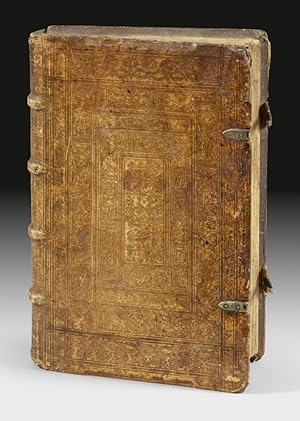
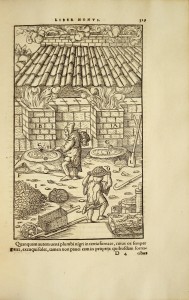
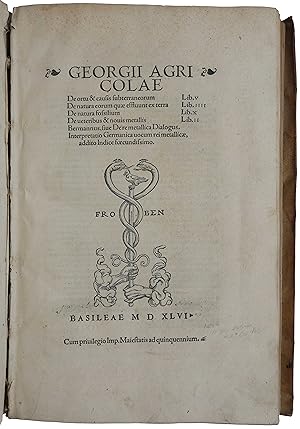

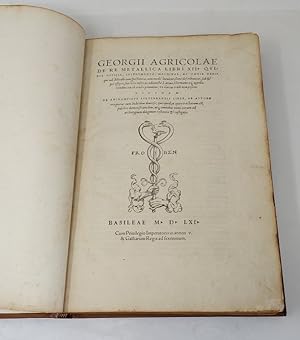
![Bild des Verkäufers für Poetarum Omnium. Ilias & Odyssea. 2 vols. I. Ilias, Andrea Divo justinopolitano interprete, ad verbum translata. Herodoti Halicarnassei libellus, Homeri vitam fidelissime continens, Conrado Heresbachio interprete. cum Indice copiosissimo. Cum Gratia. - [THE EXTREMELY INFLUENTIAL "VERSIO LATINA"] zum Verkauf von Lynge & Søn ILAB-ABF](https://pictures.abebooks.com/inventory/md/md30869092952.jpg)
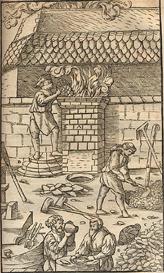

![Bild des Verkäufers für [Flowers and fruits on a marble plinth].[Paris or Holland], [ca. 1815-1825]. Four watercolour drawings on paper, three signed "G.J.J Van Os", edged with a thin black border. zum Verkauf von ASHER Rare Books](https://pictures.abebooks.com/inventory/md/md30694859556.jpg)
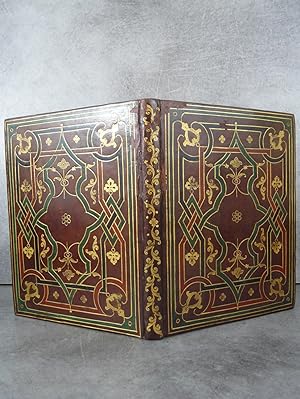
![Bild des Verkäufers für Amboinische Raritäten-Cammer oder Abhandlung von den steinschaalichten Thieren, welche man Schnecken und Muscheln nennet [.]. zum Verkauf von Antiquariat INLIBRIS Gilhofer Nfg. GmbH](https://pictures.abebooks.com/inventory/md/md1153277137.jpg)

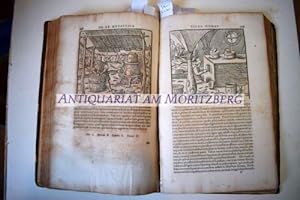
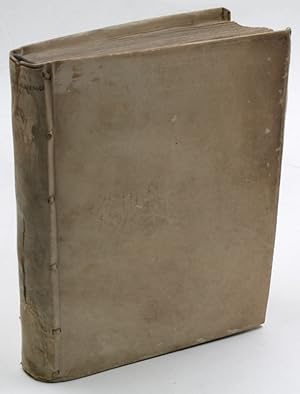
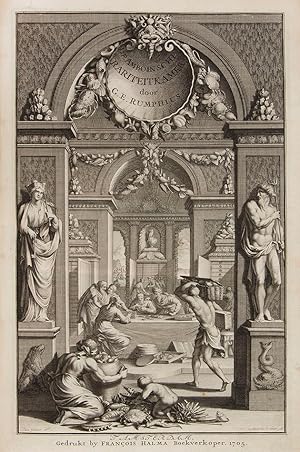
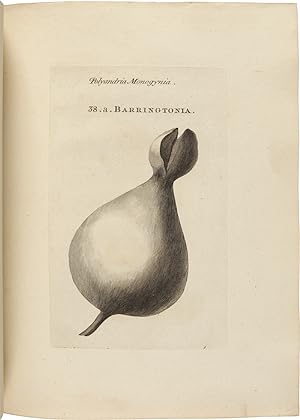

![Bild des Verkäufers für L'histoire Mahometane, ou les quarante-neuf Chalifes du Macine divisez en trois livres [.]. zum Verkauf von Antiquariat INLIBRIS Gilhofer Nfg. GmbH](https://pictures.abebooks.com/inventory/md/md13701491291.jpg)
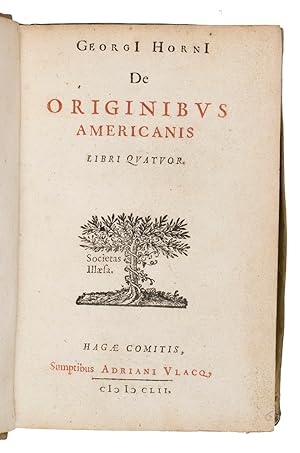
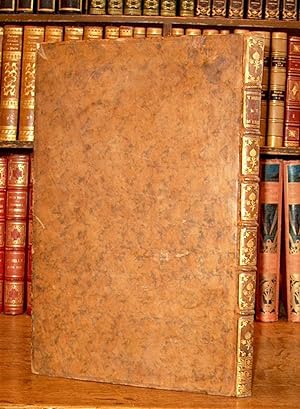
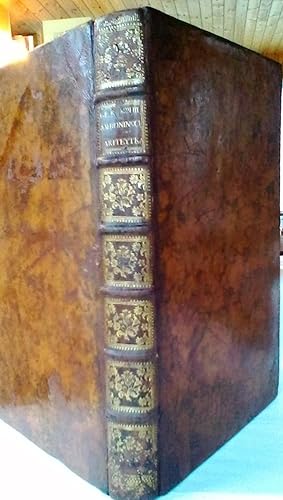
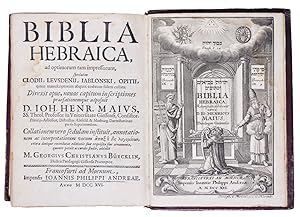
![Bild des Verkäufers für Adamus Macropedii fabula Christianae pietatis plaena. In qua "koozikoos" oste[n]ditur, quo pacto lapsus homo post multas multorum saeculorum calamitates et miserias per Christum ab initio promissum, tandem[ue] mundo exhibitum, saluti restituitur. Utrecht, Herman van Borculo, 1552.With:(2) Sententiae singulis versibus contentae, ex diversorum poëtarum sententiis Graecis, Latinae redditae.[Colophon:] Antwerp, Johannes Loeus, 1544.(3) ERASMUS, Desiderius. [Drop title:] Christiani hominis institutum.Including: ISOCRATES. [Drop title:] Ad demonicum paraenesis.[Antwerp, Jan Verwithagen?, 1551?]. With a large woodcut device on the last page. The Erasmus is a complete work extracted from an edition also containing other works and therefore lacks the general title-page and begins with quire G. 3 works in 1 volume. Small 8vo (13.5 x 9 cm). 18th-century gold-tooled calf. zum Verkauf von ASHER Rare Books](https://pictures.abebooks.com/inventory/md/md8428747537.jpg)
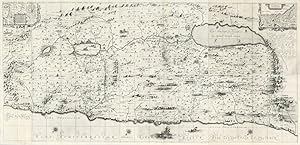
![Bild des Verkäufers für [Grammatiqi suraya aw kaldayata (.)]. Grammatica Syriaca, sive Chaldaica. zum Verkauf von Antiquariat INLIBRIS Gilhofer Nfg. GmbH](https://pictures.abebooks.com/inventory/md/md30968491338.jpg)
